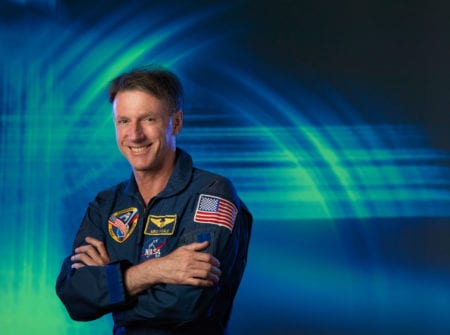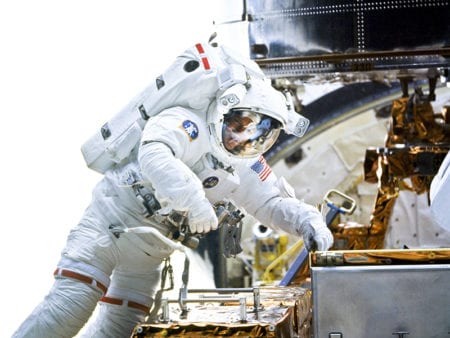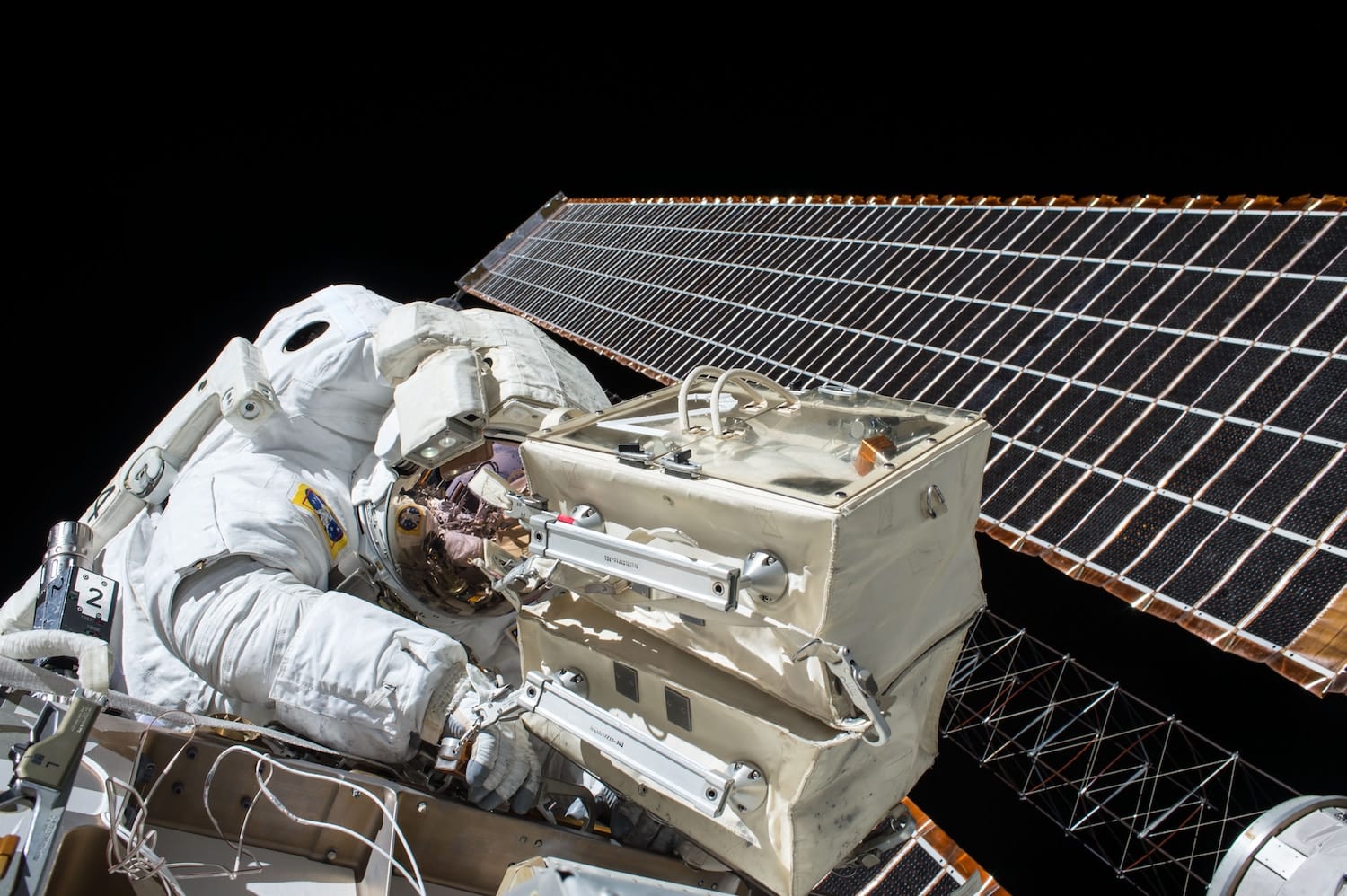On June 25, 1997, British-born NASA astronaut Dr. Michael Foale was aboard the MIR space station when it collided with a seven-ton cargo ship the size of a bus. Unaware to Dr. Foale, while his Russian colleagues were practising a docking procedure, Russian Mission Control ordered the automatic docking system to be switched off, based on concerns its radar might interfere with the ship’s visual monitor. The result was catastrophic, creating in the worst collision in the history of manned space flight.

Dr. Michael C. Foale. Image: Robert Markowitz
Leaking oxygen, the MIR began spinning out of control at the rate of about one degree a second with a puncture in one of the modules, causing life threatening decompression. Dr. Foale and his colleagues worked feverishly to repair the damage over a critical six-hour period — with no power.
Dr. Foale is no stranger to the challenges of repairing equipment in space. With 22 hours of space walking time logged, he says his biggest challenge is the size of the responsibility.
For example, while on the Discovery Space Shuttle in 1999, Dr. Foale and his colleague were charged with the task of changing the computer in the Hubble telescope. As the gloves in space suits don’t bend or provide any tactile feeling for the astronauts wearing them, Dr. Foale was acutely aware that if he broke just one of the thousand gold pins on the Hubble — or let any small parts float off — it would single-handedly be the worst thing he could do to the entire field of astronomy. In fact, much of the older equipment he’s had to repair throughout his career was never designed to be serviced by people wearing inflexible space suits.

Dr. Foale servicing the Hubble telescope.
In addition to the risks and challenges, there’s also a huge upside. Few of us get to see sunrises and sunsets every ninety minutes while we’re at work, or get to view the extraordinary beauty of the stars, including all their colour spectrums, firsthand, or see the whole lens of the Milky Way Galaxy — including its awe-inspiring bulge-like disc — through the thin face plate of a helmet.
We are fortunate enough to have Dr. Foale as our keynote speaker at this year’s Maximize Europe 2017 customer conference in Berlin. Dr. Foale will be discussing what it’s like to deal with the unique scenario of equipment failure in space, the critical balance of when to trust human instinct over emergency machine operating procedures, and the leadership qualities, training and team dynamics required to overcome such problems on a space ship he likens to an oily smelling cluttered garage, akin to working in someone’s esophagus.
As one of NASA’s most senior and revered astronauts, a former Cambridge student buddy of Hugh Laurie and Stephen Fry, and described by The Guardian as “the first punk in space,” Dr. Foale’s Maximize keynote is not to be missed! To secure your place, register here.


Share this: